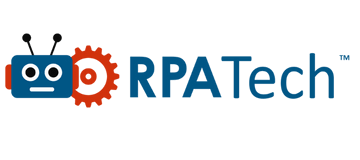In the ever-evolving landscape of technology, terms like “Machine Learning” (ML) and “Artificial Intelligence” (AI) are frequently used interchangeably, leading to confusion. However, these terms represent distinct concepts within the realm of computer science. In this blog post, we will delve into the fundamental differences between Machine Learning and Artificial Intelligence and shed light on how they complement each other.
Defining Machine Learning
Machine Learning is a subset of Artificial Intelligence. It is a data-driven approach that enables computer systems to learn and improve from experience without being explicitly programmed. The core idea behind Machine Learning is to develop algorithms that allow computers to make predictions or take actions based on patterns and insights drawn from data.
Key Characteristics of Machine Learning
- Data-Centric: ML relies heavily on data. It requires extensive datasets to train algorithms effectively.
- Algorithms: Machine Learning algorithms are designed to identify patterns, make predictions, or classify data.
- Training: The system learns through training, where it refines its predictions and improves its accuracy.
- Supervised and Unsupervised Learning: ML encompasses supervised learning, where models are trained with labeled data, and unsupervised learning, where models identify patterns without labeled data.
- Applications: Common ML applications include image and speech recognition, recommendation systems, and predictive analytics.
Understanding Artificial Intelligence
Artificial Intelligence is a broader concept encompassing various technologies, including Machine Learning. AI refers to the development of computer systems capable of performing tasks that typically require human intelligence. These tasks include reasoning, problem-solving, understanding natural language, and adapting to new situations.
Key Characteristics of Artificial Intelligence
- Human-Like Intelligence: AI seeks to replicate human-like cognitive functions, such as reasoning, problem-solving, and decision-making.
- Machine Learning and Beyond: AI involves not only Machine Learning but also other techniques like expert systems, natural language processing, and robotics.
- Autonomy: AI systems can operate autonomously, making decisions based on a broader understanding of the environment.
- Adaptability: AI systems adapt to changes and learn from their experiences, improving their performance over time.
- Applications: AI has a wide range of applications, including autonomous vehicles, chatbots, virtual assistants, and healthcare diagnostics.
Bridging the Gap
While Machine Learning and Artificial Intelligence are distinct, they are often used together to create intelligent systems. The relationship between the two can be understood in the following ways:
Machine Learning as a Tool of Artificial Intelligence
Machine Learning serves as a vital tool within the broader realm of Artificial Intelligence. AI systems use Machine Learning techniques to process and analyze data, make predictions, and improve their performance. This synergy allows AI systems to adapt and evolve, becoming more intelligent over time.
Machine Learning's Role in AI Development
Machine Learning plays a pivotal role in the development of Artificial Intelligence. It equips AI systems with the ability to learn from data, which is crucial for making intelligent decisions and understanding complex patterns. Without Machine Learning, AI would struggle to process and interpret the vast amounts of data required for intelligent decision-making.
AI Encompasses More Than Just Machine Learning
While Machine Learning is a prominent component of AI, AI goes beyond Machine Learning. AI systems incorporate various techniques and technologies, including expert systems, natural language processing, and robotics, to simulate human-like intelligence across diverse domains.
Key Differences at a Glance
To summarize, here are the key differences between Machine Learning and Artificial Intelligence:
Scope
– Machine Learning: Focuses on data-driven algorithms that enable computers to learn from experience.
– Artificial Intelligence: Encompasses a broader range of technologies to replicate human-like intelligence.
Learning
– Machine Learning: Relies on algorithms and data for learning.
– Artificial Intelligence: Seeks to replicate human-like cognitive functions, including reasoning and problem-solving.
Autonomy
– Machine Learning: Often operates with human intervention and guidance.
– Artificial Intelligence: Aims for autonomy in decision-making and adaptation to new situations.
Applications
– Machine Learning: Commonly used in image recognition, recommendation systems, and predictive analytics.
– Artificial Intelligence: Applied in diverse domains, including autonomous vehicles, chatbots, and healthcare diagnostics.
Conclusion
Machine Learning and Artificial Intelligence are intricately connected yet distinct concepts. Machine Learning serves as a powerful tool within the broader domain of Artificial Intelligence, enabling computers to learn, adapt, and make data-driven decisions. Understanding the differences between these terms is crucial for those looking to navigate the evolving landscape of technology and harness the potential of both Machine Learning and Artificial Intelligence in various applications.




